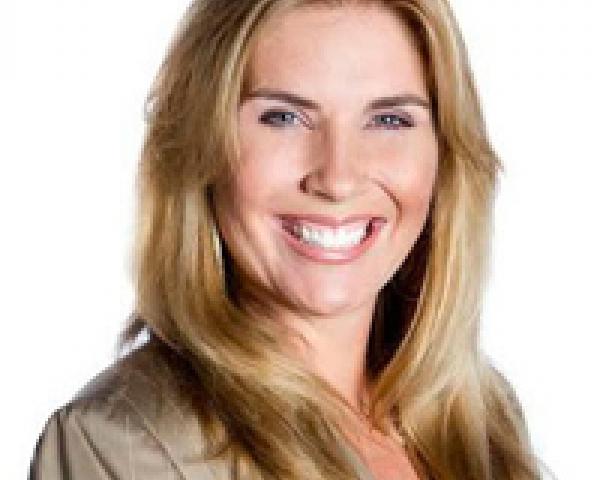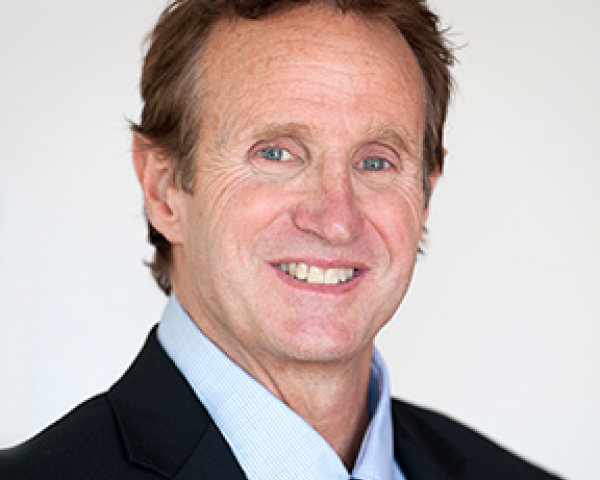How Actuaries Can Be Faster, More Efficient
Faster actuarial answers are needed to meet the growing demand for quick product development, testing and rollout.

Faster actuarial answers are needed to meet the growing demand for quick product development, testing and rollout.

Get Involved
Our authors are what set Insurance Thought Leadership apart.
|
Partner with us
We’d love to talk to you about how we can improve your marketing ROI.
|

William Freitag is executive vice president and leads the consulting business at Majesco. Prior to joining Majesco, Freitag was chief executive officer and managing partner of Agile Technologies (acquired by Majesco in 2015). He founded the company in 1997.
Success is simple. Just give your consumers the experience they want, through personalization and data analytics.

Get Involved
Our authors are what set Insurance Thought Leadership apart.
|
Partner with us
We’d love to talk to you about how we can improve your marketing ROI.
|

Seth Birnbaum is the CEO and co-founder of <a href="http://www.everquote.com">EverQuote</a>, the largest online auto insurance marketplace in the U.S. EverQuote has been named to Inc. 5000 list of Fastest-Growing Private Companies for three years in a row and has over $100 million in revenue—with three-year revenue growth of 208%.
For one, PricewaterhouseCoopers predicts that the sharing economy will grow to a $335 billion industry by 2025.

 I am also honored to be speaking at the conference, alongside amazing entrepreneurs like Jacob Brody of Helpful Networks, Isaac Oates Founder of Justworks and Jeff Oberstein, chief customer officer and head of science, Global Consumer Insurance at AIG. I'm actually a little nervous.
Our discussion on Wednesday, Oct. 5, is titled "Sharing Economy's Impact on the Insurance Ecosystem." We will attempt to unpack the implications of the rise of the sharing economy for the insurance industry, and how it's changing the nature of work, and workers.
In this vein, I want to pave the road slightly with a few key insights that will help frame our discussion.
The sharing economy has been termed many things over the years: gig economy, freelance economy, circular economy, collaborative consumption, and most recently "digital matching firms" by the federal government.
No matter what you term it, this new industry has changed how we consume, much like insurtech has disrupted the traditional insurance industry. How products and services are delivered is changing before our eyes. And this is a good thing.
See also: 8 Exemplars of Insurtech Innovation
To better situate our thinking for InsureTech Connect 2016, here are nine impressive facts about the rise of online marketplaces, something we now term the sharing economy.
1. PricewaterhouseCoopers predicts that the sharing economy will grow to a $335 billion industry by 2025. In 2013, this industry was valued at $15 billion.
Why it matters: We are in the midst of a transformation.
2. In 2013 alone, it was estimated that revenue passing through the sharing economy into people’s wallets was more than $3.5 billion.
Why it matters: Can you imagine what that number is now? The sharing economy is becoming a new employment marketplace faster than we may think.
3. Airbnb has hosted 60 million guests since its founding and now has two million properties listed. This is almost double the hotel rooms currently owned by the largest hotel chain, Starwood-Marriott, which has 1.1 million rooms.
Why it matters: Airbnb was founded in 2008. So, in eight years, Airbnb has more than overtaken the largest hotel chain in the amount of rooms available. This is disruption 2.0.
4. Sharing economy work is overwhelmingly part-time. Consider that the vast majority of Uber drivers work less than 30 hours a week, with 66% saying they have no set hours. Further, the average Airbnb host rents out her property for 33 nights a year.
Why it matters: This is hardly full-time employment. It's exactly what we see at WeGoLook; people are leveraging our platform to supplement income through flexible part-time work. It's patchwork employment, and this is good because it gives people options and employment flexibility.
5. According to Time, 44% of U.S. adults have participated in the sharing economy in some fashion. The same study found that 22% of Americans have sold services in the sharing economy. And, the vast majority of those who offered services in the sharing economy described their experience as a positive one.
Why it matters: Americans are using and selling in the sharing economy. Simple as that.
6. According to JP Morgan, working in the sharing economy boosts incomes by 15%. For Airbnb hosts, on average, JP Morgan found that sellers earn an extra $314 a month, or $533 for Uber and TaskRabbit.
Why it matters: People are actually earning decent supplemental income, and they love it.
7. Although millennials use the sharing economy more than other demographics, we cannot forget about the Baby Boomers. According to research by Emergent, 18% of workers in the sharing economy are 55+. This study concludes that “the number of older Americans seeking this type of work will likely continue to grow.”
Why it matters: We all think of innovative technology and equate it with millennials, but Baby Boomers are right in there as well and will require new tools as they retire and age.
8. There are currently 50 million freelancers, or gig workers, in the U.S. By 2020, 50% of the US workforce is expected to be a freelancer.
Why it matters: We are moving to a freelancer workforce. People are craving flexibility and are willing to trade the certainty of a 9-to-5 job with benefits and pension, for the freedom of freelance and gig work. At WeGoLook alone, we've seen our gig workforce grow from zero to now more than 27,000 in just seven years.
See also: How to Insure the Sharing Economy
9. The sharing economy makes people happy by making their lives affordable. For instance, 86% of respondents from a recent PwC survey agree that the sharing economy makes their lives more affordable.
Why it matters: There's a reason people are gravitating toward access over ownership. It makes their lives easier, more affordable, and offers them income generation opportunities with almost zero startup costs.
So, how will the insurance industry adapt to the sharing economy and growing disruption of the insurtech revolution? You'll have to meet me in Vegas to find out.
I am also honored to be speaking at the conference, alongside amazing entrepreneurs like Jacob Brody of Helpful Networks, Isaac Oates Founder of Justworks and Jeff Oberstein, chief customer officer and head of science, Global Consumer Insurance at AIG. I'm actually a little nervous.
Our discussion on Wednesday, Oct. 5, is titled "Sharing Economy's Impact on the Insurance Ecosystem." We will attempt to unpack the implications of the rise of the sharing economy for the insurance industry, and how it's changing the nature of work, and workers.
In this vein, I want to pave the road slightly with a few key insights that will help frame our discussion.
The sharing economy has been termed many things over the years: gig economy, freelance economy, circular economy, collaborative consumption, and most recently "digital matching firms" by the federal government.
No matter what you term it, this new industry has changed how we consume, much like insurtech has disrupted the traditional insurance industry. How products and services are delivered is changing before our eyes. And this is a good thing.
See also: 8 Exemplars of Insurtech Innovation
To better situate our thinking for InsureTech Connect 2016, here are nine impressive facts about the rise of online marketplaces, something we now term the sharing economy.
1. PricewaterhouseCoopers predicts that the sharing economy will grow to a $335 billion industry by 2025. In 2013, this industry was valued at $15 billion.
Why it matters: We are in the midst of a transformation.
2. In 2013 alone, it was estimated that revenue passing through the sharing economy into people’s wallets was more than $3.5 billion.
Why it matters: Can you imagine what that number is now? The sharing economy is becoming a new employment marketplace faster than we may think.
3. Airbnb has hosted 60 million guests since its founding and now has two million properties listed. This is almost double the hotel rooms currently owned by the largest hotel chain, Starwood-Marriott, which has 1.1 million rooms.
Why it matters: Airbnb was founded in 2008. So, in eight years, Airbnb has more than overtaken the largest hotel chain in the amount of rooms available. This is disruption 2.0.
4. Sharing economy work is overwhelmingly part-time. Consider that the vast majority of Uber drivers work less than 30 hours a week, with 66% saying they have no set hours. Further, the average Airbnb host rents out her property for 33 nights a year.
Why it matters: This is hardly full-time employment. It's exactly what we see at WeGoLook; people are leveraging our platform to supplement income through flexible part-time work. It's patchwork employment, and this is good because it gives people options and employment flexibility.
5. According to Time, 44% of U.S. adults have participated in the sharing economy in some fashion. The same study found that 22% of Americans have sold services in the sharing economy. And, the vast majority of those who offered services in the sharing economy described their experience as a positive one.
Why it matters: Americans are using and selling in the sharing economy. Simple as that.
6. According to JP Morgan, working in the sharing economy boosts incomes by 15%. For Airbnb hosts, on average, JP Morgan found that sellers earn an extra $314 a month, or $533 for Uber and TaskRabbit.
Why it matters: People are actually earning decent supplemental income, and they love it.
7. Although millennials use the sharing economy more than other demographics, we cannot forget about the Baby Boomers. According to research by Emergent, 18% of workers in the sharing economy are 55+. This study concludes that “the number of older Americans seeking this type of work will likely continue to grow.”
Why it matters: We all think of innovative technology and equate it with millennials, but Baby Boomers are right in there as well and will require new tools as they retire and age.
8. There are currently 50 million freelancers, or gig workers, in the U.S. By 2020, 50% of the US workforce is expected to be a freelancer.
Why it matters: We are moving to a freelancer workforce. People are craving flexibility and are willing to trade the certainty of a 9-to-5 job with benefits and pension, for the freedom of freelance and gig work. At WeGoLook alone, we've seen our gig workforce grow from zero to now more than 27,000 in just seven years.
See also: How to Insure the Sharing Economy
9. The sharing economy makes people happy by making their lives affordable. For instance, 86% of respondents from a recent PwC survey agree that the sharing economy makes their lives more affordable.
Why it matters: There's a reason people are gravitating toward access over ownership. It makes their lives easier, more affordable, and offers them income generation opportunities with almost zero startup costs.
So, how will the insurance industry adapt to the sharing economy and growing disruption of the insurtech revolution? You'll have to meet me in Vegas to find out.
Get Involved
Our authors are what set Insurance Thought Leadership apart.
|
Partner with us
We’d love to talk to you about how we can improve your marketing ROI.
|

Robin Roberson is the managing director of North America for Claim Central, a pioneer in claims fulfillment technology with an open two-sided ecosystem. As previous CEO and co-founder of WeGoLook, she grew the business to over 45,000 global independent contractors.
77% of customers are willing to provide usage and behavior data in exchange for lower premiums or tailored coverage recommendations.

Get Involved
Our authors are what set Insurance Thought Leadership apart.
|
Partner with us
We’d love to talk to you about how we can improve your marketing ROI.
|

Michael Costonis is Accenture’s global insurance lead. He manages the insurance practice across P&C and life, helping clients chart a course through digital disruption and capitalize on the opportunities of a rapidly changing marketplace.
Profiling clients’ risks before recommending insurance reduces conflict-of-interest perceptions surrounding issues like sales commissions.

 LRN (lrn.com ), which has E&C (reputation risk) training for more than 25 million employees of organizations globally, does annual surveys that suggest that conflicts of interest are a major area of reputation risk concern across a wide range of predominantly U.S. companies, industries and business sectors, as shown below.
LRN (lrn.com ), which has E&C (reputation risk) training for more than 25 million employees of organizations globally, does annual surveys that suggest that conflicts of interest are a major area of reputation risk concern across a wide range of predominantly U.S. companies, industries and business sectors, as shown below.
 The digital technology era presents a wonderful opportunity for the insurance industry to elevate its reputation, which has heretofore been hurt, often unfairly. The insurance industry pays billions of claims every year, and insurance advisers play an invaluable role in the sustainability of business through risk protection.
See also: Customers’ Digital Expectations
As longtime practitioners in the international risk and insurance sector, the Risk Advisor team members are excited about the opportunity for digital risk profiling to support the insurance industry and its dedicated professionals in getting the great reputations they deserve.
The digital technology era presents a wonderful opportunity for the insurance industry to elevate its reputation, which has heretofore been hurt, often unfairly. The insurance industry pays billions of claims every year, and insurance advisers play an invaluable role in the sustainability of business through risk protection.
See also: Customers’ Digital Expectations
As longtime practitioners in the international risk and insurance sector, the Risk Advisor team members are excited about the opportunity for digital risk profiling to support the insurance industry and its dedicated professionals in getting the great reputations they deserve.
Get Involved
Our authors are what set Insurance Thought Leadership apart.
|
Partner with us
We’d love to talk to you about how we can improve your marketing ROI.
|

Peter Blackmore is a founder of Risk Advisor, which has established a fully operational interactive digital platform that makes risk management easy for small to medium-sized enterprises around the world. He has been a strategic risk adviser for many years.
With diligence and imagination, the U.K. insurance industry can use Brexit to secure its future and maintain preeminence as a leader.

Get Involved
Our authors are what set Insurance Thought Leadership apart.
|
Partner with us
We’d love to talk to you about how we can improve your marketing ROI.
|

Shaun Crawford leads Ernst & Young's $1.4 billion global insurance business. He has been in the financial services industry for 27 years, having worked both in consulting or line management with the majority of European life assurers and U.K. retail banks at some point.
70% of those who die by suicide tell someone or give warning signs -- and full-time workers spend 47 hours a week at work.

Get Involved
Our authors are what set Insurance Thought Leadership apart.
|
Partner with us
We’d love to talk to you about how we can improve your marketing ROI.
|

Candice Porter is executive director of screening for Mental Health. She is a licensed independent clinical social worker and has more than a decade of experience working in public and private settings. She also serves on the Workplace Taskforce under the National Action Alliance for Suicide Prevention.
According to studies by the Association of Certified Fraud Examiners, the typical company loses about 6% of its annual revenue to fraud.

Get Involved
Our authors are what set Insurance Thought Leadership apart.
|
Partner with us
We’d love to talk to you about how we can improve your marketing ROI.
|

Norman Marks has spent more than a decade as a chief audit executive (CAE) for major companies, with as much as $28 billion in annual revenue. He has implemented risk management, ethics programs and disclosure processes at multiple organizations.
There has been quite some debate within the coaching community about the need to improve methods of measuring effectiveness.

Get Involved
Our authors are what set Insurance Thought Leadership apart.
|
Partner with us
We’d love to talk to you about how we can improve your marketing ROI.
|

Paul Laughlin is the founder of Laughlin Consultancy, which helps companies generate sustainable value from their customer insight. This includes growing their bottom line, improving customer retention and demonstrating to regulators that they treat customers fairly.
Here are seven ways to use empathy and compassion to transform the growth trajectory of your sales organization.

 1. Get to know your people. They are human beings. They have lives outside the office. Respect that. If they have small kids, perhaps they'd appreciate a little flexibility on that Monday 9am or Friday 3pm sales meeting. Particularly during the summer months. Assume the best at all times. Everyone is fighting a battle you know nothing about. Provide some breathing room, and you'll receive their support 10x in return. A salesperson is not a number. Don't treat her like that. Get to know each individually and as a group. What gets each of them out of bed every morning? What role does each of them play on the team? Trust me, they all play a role.
2. Be vulnerable. Especially if you have just started a leadership role at a new company. Sure, you've worked in many great companies and been super successful at those companies. But you haven't done beans at this company yet. Sure, you have years and years of experience. You'll have the opportunity to apply what's relevant down the road. Right now, accept and publicly share that you need their help getting up to speed. You need their help understanding the business, the market, the product, the challenges, what's been tried before and what has not. Be super-inquisitive. Don't be afraid to ask why things are done a certain way if something doesn't make sense at first glance. But remember, maybe there is a valid reason for it. Once you have absorbed it all, only then can you add real value. While you are doing this, continue getting to know your people.
See also: 6 Tips to Augment Sales and Prospecting
3. Walk in their shoes. Don't just say: "I wouldn't make you do anything that I wouldn't do myself." Actually go do it. You might learn a few things. Assign yourself a few accounts. Do some prospecting. Book some meetings. Take the call from that frustrated client. Take the feedback to the cross-functional partners. Close a deal. More importantly, close it out in Salesforce (or whatever CRM you use). Is it an easy process for your pepole? Experience a typical day walking in their shoes. Only then can you be truly emphatic. Titles don't make leaders. Actions do.
4. Be there for them. Listen. This is important. Genuinely be there for them. If you have done 1), 2) and 3), then they will come to you as their leader. They will look for your guidance, help and support. If you have done 1), 2) and 3) well, you may find that your role as a sales leader morphs into somewhat of a counselor. That's okay. Our role as sales leaders is to spend 90% of our time watching and listening. It is in these moments that you can apply your years of experience. Apply it. Share it. Leverage it. There will be times when your people are frustrated, and they just need to talk. Be there for them. There will be times when things are happening outside of work, things that they are dealing with. Apply empathy, give them some space, some flexibility, some breathing room. Nine times out of 10 they will thank you for it. Nine times out of 10 they will share with you what's happening in their lives. You may even be given the priceless opportunity to provide advice that will genuinely affect that person's life. That's what gets me out of bed every morning. Too often we underestimate the power of a smile, a kind word, a listening ear, an honest compliment or the smallest act of caring, all of which have the potential to turn a life around.
5. Earn the right to coach. If you have done 1), 2), 3) and 4) well, then you'll earn the right. Your role as a sales leader is to make your people more productive and successful (in my opinion, both personally and professionally). Get out in the field with them. How else can you provide in-the-moment coaching? Newsflash: It's often the tiny tweaks that you suggest after a client call or meeting that can translate into game-changing performance. Let people leverage your professional network. You've been in business for many years and worked for all those amazing companies, remember. Why have them struggle to find a way into the decision makers at their target companies, if someone in your network could provide a warm introduction? Be compassionate.
6. Celebrate success. Whether big, or small, celebrate it. And remember, it's not just about the numbers. What are the biggest challenges facing each of your people? Celebrate their success. Recognize them. Salespeople are human beings. Sure, they get paid commission on those big deals but what if that's not what motivates them? Maybe they are motivated by other things. A person who feels appreciated will always do more than what was expected.
7. Let them fly. There is no greater feeling than seeing your people embrace everything you have given them, all the time you have invested and watching them fly. Hearing them use some of your suggestions, seeing them get the expected reaction from the client, seeing them grow in confidence and seeing them pay it forward to those around them. This is why you chose a career in sales leadership, right? Back off slowly and let them fly.
See also: Agencies: Grow Sales AND Develop Staff
Empathy and compassion are two qualities that can fundamentally transform the growth trajectory of any sales organization. For the sake of your people, if it doesn't come naturally, please keep trying. They will respect you for it.
Thanks for reading.
1. Get to know your people. They are human beings. They have lives outside the office. Respect that. If they have small kids, perhaps they'd appreciate a little flexibility on that Monday 9am or Friday 3pm sales meeting. Particularly during the summer months. Assume the best at all times. Everyone is fighting a battle you know nothing about. Provide some breathing room, and you'll receive their support 10x in return. A salesperson is not a number. Don't treat her like that. Get to know each individually and as a group. What gets each of them out of bed every morning? What role does each of them play on the team? Trust me, they all play a role.
2. Be vulnerable. Especially if you have just started a leadership role at a new company. Sure, you've worked in many great companies and been super successful at those companies. But you haven't done beans at this company yet. Sure, you have years and years of experience. You'll have the opportunity to apply what's relevant down the road. Right now, accept and publicly share that you need their help getting up to speed. You need their help understanding the business, the market, the product, the challenges, what's been tried before and what has not. Be super-inquisitive. Don't be afraid to ask why things are done a certain way if something doesn't make sense at first glance. But remember, maybe there is a valid reason for it. Once you have absorbed it all, only then can you add real value. While you are doing this, continue getting to know your people.
See also: 6 Tips to Augment Sales and Prospecting
3. Walk in their shoes. Don't just say: "I wouldn't make you do anything that I wouldn't do myself." Actually go do it. You might learn a few things. Assign yourself a few accounts. Do some prospecting. Book some meetings. Take the call from that frustrated client. Take the feedback to the cross-functional partners. Close a deal. More importantly, close it out in Salesforce (or whatever CRM you use). Is it an easy process for your pepole? Experience a typical day walking in their shoes. Only then can you be truly emphatic. Titles don't make leaders. Actions do.
4. Be there for them. Listen. This is important. Genuinely be there for them. If you have done 1), 2) and 3), then they will come to you as their leader. They will look for your guidance, help and support. If you have done 1), 2) and 3) well, you may find that your role as a sales leader morphs into somewhat of a counselor. That's okay. Our role as sales leaders is to spend 90% of our time watching and listening. It is in these moments that you can apply your years of experience. Apply it. Share it. Leverage it. There will be times when your people are frustrated, and they just need to talk. Be there for them. There will be times when things are happening outside of work, things that they are dealing with. Apply empathy, give them some space, some flexibility, some breathing room. Nine times out of 10 they will thank you for it. Nine times out of 10 they will share with you what's happening in their lives. You may even be given the priceless opportunity to provide advice that will genuinely affect that person's life. That's what gets me out of bed every morning. Too often we underestimate the power of a smile, a kind word, a listening ear, an honest compliment or the smallest act of caring, all of which have the potential to turn a life around.
5. Earn the right to coach. If you have done 1), 2), 3) and 4) well, then you'll earn the right. Your role as a sales leader is to make your people more productive and successful (in my opinion, both personally and professionally). Get out in the field with them. How else can you provide in-the-moment coaching? Newsflash: It's often the tiny tweaks that you suggest after a client call or meeting that can translate into game-changing performance. Let people leverage your professional network. You've been in business for many years and worked for all those amazing companies, remember. Why have them struggle to find a way into the decision makers at their target companies, if someone in your network could provide a warm introduction? Be compassionate.
6. Celebrate success. Whether big, or small, celebrate it. And remember, it's not just about the numbers. What are the biggest challenges facing each of your people? Celebrate their success. Recognize them. Salespeople are human beings. Sure, they get paid commission on those big deals but what if that's not what motivates them? Maybe they are motivated by other things. A person who feels appreciated will always do more than what was expected.
7. Let them fly. There is no greater feeling than seeing your people embrace everything you have given them, all the time you have invested and watching them fly. Hearing them use some of your suggestions, seeing them get the expected reaction from the client, seeing them grow in confidence and seeing them pay it forward to those around them. This is why you chose a career in sales leadership, right? Back off slowly and let them fly.
See also: Agencies: Grow Sales AND Develop Staff
Empathy and compassion are two qualities that can fundamentally transform the growth trajectory of any sales organization. For the sake of your people, if it doesn't come naturally, please keep trying. They will respect you for it.
Thanks for reading.
Get Involved
Our authors are what set Insurance Thought Leadership apart.
|
Partner with us
We’d love to talk to you about how we can improve your marketing ROI.
|

Dan Swift has worked in London, Sydney and now New York with highly talented people at high growth, innovative companies including GE Capital, Complinet, Thomson Reuters, LinkedIn and now Sprinklr. Swift has unique insight into how forward thinking senior executives can leverage social media to lead more effectively in a rapidly changing digital world. Swift is an advisory board member for Insurance Thought Leadership and CEO/Founder of Empire Social Media.